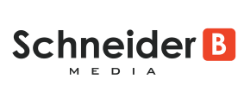LinkedIn is primarily thought of as a social network for “professionals,” best known for job hunting, networking, professional development tips, and business-related updates. For this reason, some school marketers question the validity of including a LinkedIn Group in their marketing outreach plan.
While social media channels such as Facebook, Instagram, and Pinterest are no-brainers when it comes to school marketing, you shouldn’t ignore LinkedIn either.
LinkedIn has an active community that includes parents, faculty, and alumni. It is a useful platform for:
- Growing your school’s connections
- Building brand awareness
- Provide an open forum for discussion with your school community
- Share news and information about your school
- Post job and volunteer opportunities to recruit qualified individuals
LinkedIn Groups are notorious for self-promotion and spam. It can be easy to rationalize a LinkedIn Group would not be a good use of your time. However, social media as we know it is changing. There’s a significant shift from simply broadcasting messages to actively engaging followers. You would be leading this trend for your school.
Plus, LinkedIn usage is growing. LinkedIn has been steadily growing to over 706 million users. This means you have a higher chance of attracting the right people to your LinkedIn Group.
Furthermore, LinkedIn offers powerful community management tools not available on other platforms. For example, LinkedIn will send out:
- A daily or weekly digest of all activities in the group to its members to keep them updated and engaged
- An admin announcement email to members’ inboxes once a week (email inboxes, not app notifications)
- A connection invitation to as many as 15 group members each month to whom you’re not directly connected
The most common reason school marketers start a LinkedIn Group is to provide leadership to potential parents, enrolled families, faculty, administration, board members, and alumni. LinkedIn Groups have been shown to significantly increase your LinkedIn network. Groups are accessible and discoverable from the LinkedIn home page; relevant conversations will appear in the main feed, making it easier for potential followers to find your school.
The most successful LinkedIn Groups are committed to maintaining a quality environment and consistently providing value to group members.
Here’s how to get started with a LinkedIn Group for your school.
-
Set Up Your LinkedIn Group
It’s pretty easy to start a LinkedIn Group. From your LinkedIn home page, click on Work > Groups > Create Group. From here, fill out the details about your school:
- School Name
- Purpose of the Group. Give a brief description of your school and include your location (even though there is a Location field). Include a brief sentence about what users can expect and what value they will gain by joining your LinkedIn Group.
- Include your location to ensure your Group will be findable to people in your community.
- Group rules. Let the tone and expectations of the group.
- Using a logo and a cover banner will help your school’s LinkedIn Group look more professional. The logo should be square and at least 60 x 60 pixels. The cover banner should be 1775 x 444 pixels. I recommend saving it in .PNG format.
- Choose whether to make your LinkedIn Group Searchable or Unlisted.
- Standard groups are visible in search results. Members can also invite other members to join.
- Unlisted groups do not appear in search results. Only group admins can invite members to join. Generally, an unlisted LinkedIn Group would be reserved for a private group like an alumni-only group.
-
Start publishing content
Before you invite people to join, publish carefully selected content that will be of interest and relevant to school community. Make sure your content:
- Solves a problem they are facing
- Discusses new issue or trend your school is facing
- Choose topics that will spark discussion like a question or ask for opinions.
- Continue to publish content to your LinkedIn Group at least once a week.
-
Invite people to join
Once you’ve published some content, you’re ready to invite people to join your new LinkedIn Group. You can now only invite people to your group that you already have a connection with.
Another strategy is to encourage new members to invite people in their network to join as well.
One handy feature of LinkedIn Groups is the message templates. Create custom messages that will be automatically sent to people interested in joining your group. This is a great opportunity to let your school shine! If you don’t set up message templates, LinkedIn will send a default message.
There are four message templates you can alter.
- Request to Join
- Welcome
- Decline
- Decline and Block
To access these settings, from your LinkedIn Group home page click on Manage and then select Templates on the left. Click on Create Template for the messages you want to customize.
You can also include an application form in your Request to Join message. This helps to filter requests as well as gain helpful information about the person requesting to join.
Make sure you take the time to review potential members before accepting them into the Group with the goal of keeping the group “clean” with people who really have an interest in your school. Also, be sure to delete any Spam that gets published. And don’t hesitate to block or delete members who violate your rules.
There’s plenty of room to grow your group membership; you can have up to 20,000 members.
-
Promote your LinkedIn Group
Get the word out about your LinkedIn Group! Here are some tried-and-true promotion strategies.
- Post the link to your group in the About This Group section and clarify who would benefit from your group
- Display the group on your LinkedIn profile and encourage other group members to do the same
- Include a link to your group in your email signature
- Write a blog post about your group and promote it through your regular channels
- Share the group link with a brief summary in your school newsletter
-
Manage your LinkedIn Group
There are some administrative tasks you should perform for your group. Some should be done regularly and others will only need to be done on an as-needed basis.
- Accept (or deny) new requests to join the group. Go to Manage Group > Requested to view the people who have asked to join. Be sure to look at their profiles to make sure they are appropriate for your group.
- Welcome new members to the group. The best practice is to “tag” new members by using the “@” symbol before their name. You can even invite them to introduce themselves and share what they hope to get out of the group. This can build community as well as give you a better understanding of why people joined the group.
- Regularly (daily) review published content to ensure it’s not spam, self-promotional, or on-topic for the group. You want to make sure posted content is relevant and of interest to members.
- Be sure to publish relevant, helpful content to the group at least once a week. It’s a good idea to stimulate discussions as well. This will help to keep people interested and engaged.
- I recommend cleaning up old invitation requests. If someone hasn’t responded in a month, they probably won’t in the future. You can “Rescind” invitations to keep this page clean and tidy.
- You may want to add a Manager to your group. A Manager must be a member. Just go to the list of members and find the person you want to add. Select Make Manager > Confirm.
- To pass on ownership of the group, click the three dots beside the person you want to transfer it to and select Transfer Ownership. Then Confirm the transfer.
- You can Block or Unblock members by going to the three dots next to the person’s name.
LinkedIn is an excellent platform to reach parents, faculty, staff, administrators, and alumni because many of them are already users. A group can be an excellent way to keep people engaged and interested in what’s happening at your school, as well as for prospective parents to learn more about your school. Taking the time to do a good job managing your group will help it be successful.
Do you belong to a LinkedIn Group? Why do you think they are great?

